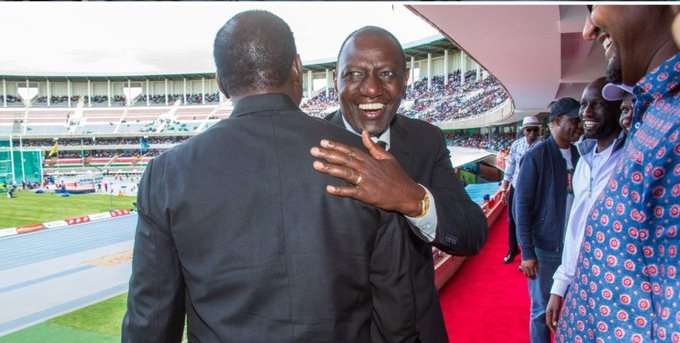By The Weekly Vision Reporter
Kenya’s risk of debt distress remains elevated due to the negation of fiscal consolidation plans and the frequent revisions to the national budget, according to an analysis of the 2025 Budget Review and Outlook Paper (BROP) by the Institute of Economic Affairs (IEA).
According to the IEA, the BROP should incorporate stress tests into its debt sustainability assessment to demonstrate the country’s vulnerability to adverse economic shocks. It notes that while the Public Finance Management (PFM) Act stipulates that public debt and obligations should be maintained at a sustainable level as approved by Parliament for the National Government and by the County Assemblies for County Governments, the National Government borrowed Ksh 854.5 billion during the financial year, bringing the gross public debt stock to Ksh 11.8 trillion (Ksh 5.5 trillion external; Ksh 6.3 trillion domestic).
IEA warns that Kenya’s current debt stock threatens the country’s financial sustainability, as debt is only manageable if Kenya can meet both current and future obligations without default or external assistance.
It further notes that the government relies on the joint World Bank–IMF Debt Sustainability Assessments (DSA), a framework that rates the country’s debt risk by comparing key debt burden indicators against predetermined threshold levels. The DSA indicators highlighted in the 2025 BROP reveal that Kenya has significantly breached most of the debt sustainability thresholds under the baseline scenario.
Specifically, in terms of total debt, the present value (PV) of the total public debt-to-GDP ratio remains above the 55 per cent benchmark until 2029.
According to the IEA, the situation is even more critical for external debt, as the PV of external public and publicly guaranteed (PPG) debt-to-exports solvency indicator breaches its 180 per cent threshold through to 2030, while the debt service-to-exports liquidity indicator exceeds its 15 per cent threshold for a much longer period, remaining elevated until 2037.
The only indicator projected to fall below its sustainability threshold (18 per cent) is the external debt service-to-revenue ratio, beginning in 2029.
“The stress tests included in the DSA are, however, missing from the BROP. These tests, which subject the debt path to hypothetical shocks such as lower GDP growth or exchange rate depreciation, are crucial because they demonstrate the country’s extreme vulnerability to adverse economic events. Even a moderate shock could rapidly worsen debt indicators and potentially trigger immediate debt distress. It is evident that Kenya’s debt situation is worse than implied in the BROP. This, coupled with missed revenue targets and recent fiscal slippages, severely elevates the nation’s risk of debt distress,” the IEA notes.
“Maintaining macroeconomic stability and safeguarding the economy therefore requires an absolute commitment to financial accountability. Without rigorous adherence to fiscal discipline, transparent management of public funds, and sustained efforts to curb wasteful spending, the government will fail to restore public trust, undermine its ability to mobilise revenue, and inevitably drive the country towards a more precarious debt trajectory,” the IEA analysis adds.
It stresses that strict financial oversight is not merely a policy choice but an urgent necessity to ensure debt sustainability and protect the country’s economic future.
“Whereas fiscal responsibility principles are designed to provide stability and encourage prudent financial management, their effectiveness remains questionable. Enforcement of these principles and sanctions for non-compliance are weak, compromising their success and influence in maintaining macroeconomic stability. There is therefore a need for an independent oversight institution to ensure effective compliance, transparency, and credibility in the application of fiscal responsibility principles. Moreover, mechanisms allowing for flexibility are important, particularly during periods of economic downturn,” the IEA concludes.
The BROP is an annual end-of-year budget document that is constitutionally required to be published in September. It reviews the previous year’s fiscal performance and forecasts economic and financial prospects for the upcoming period. Specifically, the 2025 BROP provides an overview of actual fiscal performance for FY 2024/25 and assesses compliance with fiscal responsibility principles and financial objectives set out in the 2025 Budget Policy Statement. It also provides macroeconomic and fiscal forecasts for FY 2026/27 and the medium term.
The IEA’s analysis of budget documents is part of a British High Commission (BHC)-funded project on advancing issue-based politics, financial transparency, and accountability. It is aligned with Output 3 of the Kenya Institutional Strengthening Programme (KISP) business case on enhancing capacity for issue-based engagement and holding power to account.





